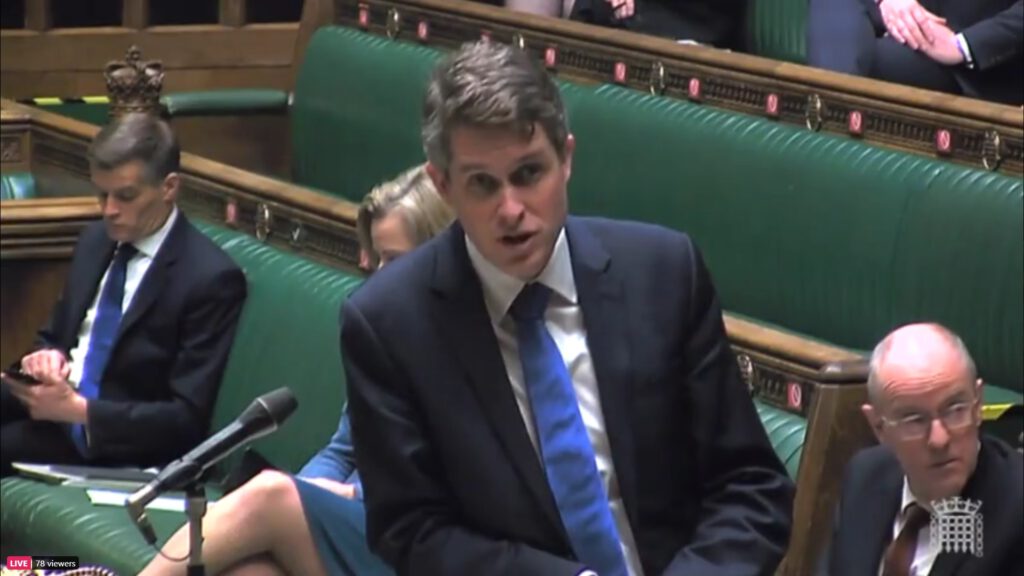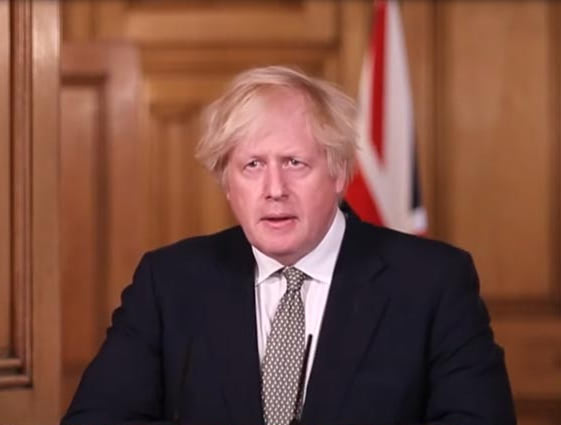What are the changes to Covid restrictions in education settings – including bubbles?

Further restrictions to be lifted from Step 4, including classroom and year group bubbles
Protective measures such as good hygiene and ventilation will remain in place next term, and testing to continue until the end of September, children will only need to isolate if they test positive from 16 August.
Further Covid restrictions in education settings will end from Step 4, the Education Secretary has confirmed today [6 July].
As part of Step 4, expected to take place on 19 July, ‘bubbles’ will end for all children under 18, social distancing will no longer be necessary, and schools will not need to stagger start and finish times, though they can continue with existing arrangements until the end of term if they wish.
The lifting of Covid restrictions in schools is in line with the general removal of restrictions for England at Step 4. Schools may choose to continue with these measures until the end of the Summer term.
From 16 August, the legal requirement to self-isolate for contacts of a positive case will end for everyone aged under 18, and for adults who have been fully vaccinated. This means that from the autumn term, only those who test positive will need to self-isolate.
From Step 4, NHS test and trace will carry out contact tracing in all education settings rather than being run by the school or college. Those identified as close contacts will be advised to take a PCR test, and only need to isolate if they test positive. Children must self-isolate if they have symptoms of Covid or a positive test result.
Testing for close contacts under 18 will be split into two categories. All Primary, Secondary and College age children should take a single PCR test. Early Years children should only take a PCR test if a member of their household tests positive.
Protective measures will remain in place for the autumn term in all education settings including practicing good hygiene, ventilation, and regular testing until the end of September to strike a balance between relaxing restrictions and minimising further disruption to children’s education.
Two onsite tests should be taken by each secondary school and college student on return, followed by twice weekly testing at home.
The Government will review testing requirements by the end of September.
 Education Secretary Gavin Williamson said:
Education Secretary Gavin Williamson said:
“I am incredibly grateful to everyone working in education and childcare for their tireless work to make the best of what has been a very challenging situation.
“While the pandemic is not over, we are moving into a new phase of managing Covid, from strict rules and towards personal responsibility. The measures we will have after summer strike the right balance as we learn to live with the virus so children can get on with their lives and education in the best possible way.”
Education settings will continue to have an outbreak management plan and work with local health teams, as is standard practice. Local Directors of Public Health may advise a setting to temporarily reintroduce some control measures in the event of an outbreak.
All school trips, drama, music and sporting activity will be able to resume in line with the relaxation of restrictions across society from Step 4.
Education settings still operating over the summer will continue to test twice a week, with asymptomatic test kits still available to families over the summer break.
All education staff are urged to get both vaccine doses if they have not yet done so, helping further reduce any potential disruption as a result of self-isolation.
From Step 4, there will also be no restrictions on in-person teaching and learning in universities.
Sector Reaction
Commenting on Gavin Williamson’s statement to the Commons about changes to Covid restrictions in education settings,
 Kate Green, Labour’s Shadow Education Secretary, said:
Kate Green, Labour’s Shadow Education Secretary, said:
“Thank you, Madame Deputy Speaker, and I thank the Secretary of State for his statement and advance sight of it.
“I would like to echo his tribute to the education staff, pupils, and parents who have done so much over the past 16-months to keep children and young people learning.
“Just over an hour ago, the Department for Education confirmed that last week there were 623,000 pupils who were not in school because of coronavirus.
“And while 471,000 of those pupils were out of school because of a bubble collapsing in school, there were still over 150,000 who were not in the classroom with confirmed or suspected cases of coronavirus, or because of potential contact with a case outside the classroom.
“It is not just bubbles that have driven pupils from the classroom, it was the Conservatives’ negligence in letting the Delta variant take hold at the same time as they failed to take the necessary precautions in schools.
“I have always said that school is the best place for children – for their learning, their wellbeing, and their social development – and that is why I believe we must do everything we can to keep them there safely.
“Mr Speaker, many parents across the country will be relieved to hear that the bubbles policy is coming to an end.
“But the Secretary of State has not given us confidence that his alternative will keep more children in school without driving up infections.
“His Department has piloted using testing instead of the bubble system, but he did not mention this in his Statement. Can he tell us the results of those pilots using daily testing instead of bubbles in some schools? Did it mean more hours in the classroom, did it mean more cases, did it mean an unmanageable workload on school leaders?
“Can he confirm how many schools pulled out of the pilots and if the reasons for schools withdrawal is informing his department’s planning for next year?
“He said that bubbles will end when we reach Stage 4, but that there will not be any on-site testing until September. So what support is he putting in place to keep pupils in the classroom for the remainder of this term?
“He said bubbles need to end in order to support summer schools, can he confirm that they will have mitigations in place in addition to testing so that children can actually learn and not just isolate over summer?
“And separate to summer schools his Department has promised a holiday activities and food programme. Can he tell me what measures will be in place to ensure that this programme can run and that the children relying on it will not lose out?
“The Secretary of State spoke of a baseline of protective measures for when schools return in September, can he say more about what they are? He mentioned better ventilation, will all schools receive support from his department to put this in place?
“Specifically, on masks – can the Secretary of State explain to me why masks were required in schools in March and April, but are not required now, when case number are much higher? Will he publish the scientific advice that I am sure he has received that is underpinning his decision, and if he cannot do that, will he think again?
“We know that the vaccination programme, delivered by the NHS, remains our route out of this pandemic, but we still do not know if this will be available to children. When does he expect to receive this advice, and when will he make it public? If the JCVI do propose vaccinating older children, can he guarantee that there will be an infrastructure in place to begin that process before the return to the classroom in September?
“As we look ahead to the new academic year, can he guarantee that schools, staff, and pupils will know his plans for assessments next year by the first of September at the latest?
“The Secretary of State mentioned on-site testing in colleges, but what other measures will be in place? Have they been supported to put better ventilation in place?
“I am sure students will welcome the return of in-person teaching and learning in higher education, but can the Secretary of State say what protective measures will be in place in these settings and what steps will be taken to support the return and safe learning of international students?
“Madame Deputy Speaker, I want nothing more than for children to be in class, learning and spending time with their friends, and it is right for children’s learning that we move away from the chaotic bubble system, but we can’t simply wish away the real challenges of the pandemic.
“Today’s statement offers no clarity on how the Government will stop infections spiralling. The Conservatives’ inadequate testing regime, lack of action on ventilation and their recklessness at the border have put our children’s education at risk. This must not continue.”
 Lee Elliot Major, Professor of Social Mobility at the University of Exeter, said:
Lee Elliot Major, Professor of Social Mobility at the University of Exeter, said:
“Any move to ensure more children attend face-to-face classes is welcome – given the unprecedented learning loss suffered by pupils during the last year.
“Our latest research reveals that most children missed over half of their expected classroom days during the first year of the pandemic.
“Education recovery must now be a national priority.”
 Kevin Courtney, Joint General Secretary of the National Education Union, said:
Kevin Courtney, Joint General Secretary of the National Education Union, said:
“Gavin Williamson has announced an end to bubbles and self-isolation, to follow the removal of masks in mid-May, without even a replacement by daily contact testing.
“Instead, NHS test track and trace will contact children who have a positive result to ask them who their close contacts are and will then ask those contacts to have a PCR test. However, those close contacts will not have to isolate whilst waiting for that PCR test.
“Head teachers will welcome not being responsible for testing of pupils but will share the concerns of the NEU about how effective a public test track and trace system will be and how much it will control cases in schools. Schools have so far been the most effective part of the test track and trace system.
“It seems clear that the Government policies are based on a new form of herd immunity strategy – they are hoping that the increase in vaccination rates and the increase in infection rates across the summer will eventually get cases to fall simply because there is no one left to infect.
“They hope that hospitalisations and deaths will not increase, that further variants which escape the vaccination do not arise, and that debilitating illness from Covid and Long Covid does not become common in children.
“The Government should be seeking to improve ventilation in schools by providing CO2 monitors and HEPA air filters, planning mass asymptomatic testing in schools organised by PHE, and encouraging JCVI to come forward with its thinking on the vaccination of secondary-aged children.
“We can all hope for the best, but we must now plan for something that is less than the best.”

Nick Brook, deputy general secretary of school leaders’ union NAHT, said:
“No school leader wants to have restrictions in place any longer than are needed, but there will be a sense of real concern amongst many that the worsening situation they see before their eyes is at odds with the government’s narrative of relaxation and return to normality. Schools have seen a near doubling of children contracting COVID-19, with 28,000 confirmed cases reported in the last week alone. School leaders and parents alike will want more reassurance than has been given so far that removal of restrictions are supported by scientific evidence, not driven by political convenience.
“It is certainly about time that NHS test and trace step forward to take responsibility from school leaders for contact tracing and managing outbreaks. However, it would be extremely concerning if government were to lurch from one extreme to the other, should there be no clear requirement on pupils that have come into very close contact with Covid to test and remain at home for that short period whilst awaiting results. We urge government to set out expectations and clarify how this will work in practice.
“The government must also now urgently consider what else it can be doing to protect school communities. In other parts of the world we are seeing action being taken on issues such as ventilation in classrooms – that is precisely the sort of thing that should be happening here too. Rather than trying to actually tackle the problem, there is a real risk that the government has simply stored up more for the term ahead. A failure to get to grip with Covid cases in schools not only increases the risk for those in the school community, including the most vulnerable, but it runs the risk of actually lead to further disruption in September. Whilst the government may be hoping for the best come Autumn, it must plan for the worst.
“From September, all schools have been told that they will need to have in place contingency plans, should there be a Covid outbreak amongst pupils, which could trigger reintroduction of restrictions on a school-by-school basis. By shifting responsibility to schools for development and implementation of continency arrangements, Government must not simply wash their hands of the problem. Going forward, it is essential that school leaders are given the full backing of government to do what is necessary to maintain education and keep pupils and the school community safe.”
 Government’s “alarming” approach abandons children to the risks of Covid, UNISON assistant general secretary Jon Richards said:
Government’s “alarming” approach abandons children to the risks of Covid, UNISON assistant general secretary Jon Richards said:
“The government’s alarming approach abandons children to a highly transmissible virus spreading at a record pace through schools.
“Safety measures like bubbles and self-isolation are proven to reduce the spread of the virus.
“With around one in ten pupils reporting symptoms of long Covid weeks after infection, this is a dangerous gamble from the government.
“The only way to minimise risk is for tried and tested safety measures like masks, good ventilation and self-isolation to stay.
“Allowing the virus to spread rapidly amongst unvaccinated pupils provides an ideal environment for new variants to emerge.”
 University and College Union (UCU) general secretary Jo Grady said:
University and College Union (UCU) general secretary Jo Grady said:
‘The government said it would be led by data not dates, but it is scrapping health and safety measures in education while cases are climbing rapidly. The shocking outbreaks we have seen in colleges and universities over the past academic year show that educational settings act as Covid incubators and help the virus spread rapidly. Worryingly, it appears the government has learned nothing, and is set to repeat the same mistakes, abandoning important safety measures too early and showing a continued reckless disregard for health and safety.
‘Last year, ministers in Westminster failed to listen to staff and students when they pushed ahead with an unsafe reopening of college and university campuses for in-person teaching. This cannot be allowed to happen again, and vaccines need to be made available to all students as quickly as possible.
‘Yet again the government is shifting responsibility for managing a national health crisis onto employers, an approach that proved catastrophic last time. We need robust Covid health and safety measures and have a majority of the student population vaccinated.’
Ann Maya, General Manager at Boomi, commented:
“While it’s great to see restrictions being lifted, these relaxations will mean many more students passing through school gates. This will put the onus on education providers to provide quick speedy solutions.”
“Creating fast, automated technological processes will be essential to returning to a semblance of normality. However, traditional technologies aren’t cut out to handle these variables. The time required to manually code applications to create staggered schedules, monitor attendances and vaccine status poses a serious challenge for understaffed IT teams.”
“One technology that could clear a path towards a post-COVID future is low-code. Low code is a software development approach that requires little to no coding in order to build applications. These platforms are agile, scalable, and able to adapt to a rapidly changing business environment. This makes it easier for school IT departments to quickly get back to ‘business as usual’ and create a world-class end-to-end digital experience for students.”
Simon Carter, Director at RM said:
“With one in ten Secondary School pupils missing school for Covid related reasons, and a seven-fold increase in the number of pupils forced to study at home over the past fortnight, it’s perhaps surprising that the Education Secretary has announced bubbles are to be scrapped and classroom restrictions removed. Whilst this will come as a relief for many, it also reinforces why we cannot go back to the old world – and why schools must build on the lessons learnt during the pandemic.
“Let us look first at technology in the classroom. Children are now accustomed to using a computer for their schoolwork, teachers are comfortable sharing lesson content and assessing work online, and admin staff are now able to access school records securely whilst remote. Whilst we all hope that the Covid-19 pandemic is under control, who is not to say that the nation will not be hit with a flu epidemic next winter, or bad weather that forces schools to close? Going forward, all of our children – and especially their teachers – deserve a solid rest over the summer holidays, and we need them to come back refreshed and re-energised to build on these new found skills for whatever is next thrown at them.
“One example may be with examinations. Given the skills – and technology infrastructure – that now exists within our school system, now is the time to look properly at digital assessment and look hard at how we can reduce teacher workloads when marking. The pandemic disrupted the entire education system. In the university sector, for example, adaptation to lockdown largely took the form of open book exams, that often took place in a 24-hour window, taking place for the very first time. These assessments, different to previous exam iterations, effectively elicited students’ problem-solving, creativity, and application of knowledge.
“This change in higher education brings an opportunity to not just rethink how we use technology to assess students, but also improve on established approaches and develop new methods of testing in schools and colleges. By updating examination methods –using technology – schools will be much better positioned to reflect and record students’ performance more accurately, whilst also engaging students more effectively.
“Restrictions or none, it is time schools and governing bodies take note of what worked well during the past 18 months and apply it elsewhere. We all are secretly hoping for a legacy from the Covid-19 period that capitalises on recent events in a way that improves outcomes for all of our children.”
Further detailed guidance has been published to enable schools and colleges to plan for how they will operate from September.
Speaking in @HouseofCommons last week, @GavinWilliamson confirmed that he is working with @SajidJavid & health experts to reduce the number of children having to self-isolate in our schools #andcolleges.
COVID restrictions are set to end in England from step 4 of the Roadmap after @BorisJohnson set out how life will soon return close to normal.
Speaking in @HouseofCommons today, I confirmed that I am working with @SajidJavid & health experts to reduce the number of children having to self-isolate in our schools and colleges. pic.twitter.com/XA8OmOuoqZ
— Gavin Williamson (@GavinWilliamson) June 30, 2021
Sector reaction to the Prime Minister’s comments that the Government will “maintain key protections but remove bubbles” in schools

5th Jul 2021: The decision to open up will be made in a balanced and careful way, with the Prime Minister being clear that people’s personal judgement will now be key in learning to live with the virus.
Subject to a final review of the data next week, legal restrictions will end on Monday 19 July.
 Kate Green MP, Labour’s Shadow Education Secretary, said:
Kate Green MP, Labour’s Shadow Education Secretary, said:
“Parents, pupils and teachers are getting mixed messages, when what they need is absolute clarity about how the Government intends to keep children in school.
“The Education Secretary must set out the evidence underpinning these decisions and should finally heed Labour’s call for measures such as better ventilation in classrooms.
“The Conservatives’ neglect of children throughout the pandemic, and negligence in letting the Delta variant take hold, is a betrayal of the staff and parents who’ve worked tirelessly to keep kids learning. The Government must now give them a clear plan for the final weeks of this year and the return to school in September.”
 Dr Mary Bousted, Joint General Secretary of the National Education Union, said:
Dr Mary Bousted, Joint General Secretary of the National Education Union, said:
“Schools and colleges are doing everything they can to keep young people and the wider community safe. We must seriously question the wisdom of the Government’s decision to take away so many safety measures.
“These mitigations are being removed at a time when cases are rising, school outbreaks are at the highest level all year and rising sharply, and children remain unvaccinated and at risk of transmitting the virus and suffering Long Covid themselves.
“The Government should publish the results of its trials on daily contact testing as an alternative to self-isolation before changing the system. It should also provide support to schools to organise testing in the autumn term, not leave this burden on already overstretched school and college staff. It would be eminently sensible to bring in Public Health England to organise this work.
“Measures to maintain and improve ventilation by providing air filters and CO2 monitors could be quickly and easily introduced but have instead been ignored. Other simple safety measures such as wearing face masks when moving around the school have been ignored as well.
“The Government must also respond to the crisis of Long Covid by confirming that it recognises the condition as a disability and provide support to those employees affected by Long Covid.
“Gavin Williamson has asked school and college leaders to be patient in their wait for guidance, but it is simply not good enough to leave so much unresolved when so little of the summer term remains. The education secretary promised heads full clarity the moment step 4 of the roadmap was reached, so there will be considerable anger and concern if he does not make good on his word.
“This is not a Government which oversees, but one which overlooks. It has failed to take account of the alarming deterioration in self-testing numbers among school-age children, dropping from 60% in mid-March to just 15% today. The decision to remove requirements for masks in secondary classrooms from mid-May has led to a significant rise in cases of which Government appears oblivious.
“This is neglectful and reckless decision-making, when schools and colleges quite obviously need the backing of Government to ensure their workplace remains safe.
“The NEU has always said that we should hope for the best but plan for the worst, and base decisions on the science and the data. The Government appears to have no concern for other eventualities, pinning everything on hope. Schools and colleges have been through this several times before and leaders will be appalled that yet again so little is being done to support them.”
 Now isn’t the time to throw caution to the wind over mask wearing, says UNISON assistant general secretary Jon Richards said:
Now isn’t the time to throw caution to the wind over mask wearing, says UNISON assistant general secretary Jon Richards said:
“Now isn’t the time to throw caution to the wind, especially with infections on the rise. The economy is important, but so is public confidence.
“People want clarity from the government as restrictions are eased. They don’t need a confusing free-for-all, with ministers absolving themselves of any responsibility for public health.
“Ditching masks prematurely in schools has caused classroom chaos with hundreds of thousands of pupils currently isolating at home. Let’s not repeat the same mistakes elsewhere.
“Face coverings and well-ventilated workspaces provide a level of reassurance and security to staff who deal with the public. Safety laws also require their employers to keep these workers safe.
“While protective safety kit is likely to remain compulsory in hospitals and care homes, healthcare workers need assurances that this will be so.
“Many other employees, who’ve spent the past 16 months working from home, will be more reluctant to step on to crowded buses, trains, trams and tubes if masks are no longer compulsory.
“Having two vaccine jabs protects individuals and the wider community. Wearing masks is all about protecting others too. The Prime Minister should be wary about being too hasty with their scrapping.”
 Nick Brook, deputy general secretary of school leaders’ union NAHT, said:
Nick Brook, deputy general secretary of school leaders’ union NAHT, said:
“To maintain public confidence the government need to explain clearly to parents and schools alike why arrangements we were told were critical to maintaining pupil safety until now, are no longer needed going forward, despite the soaring infection rates in schools.
“No school wants to see restrictions in place any longer than they have to be, but we must ensure that in relaxing rules now we do not create further longer term disruption in the months to come.”
Current advice from the World Health Organisation says:
“Masks should be used as part of a comprehensive strategy of measures to suppress transmission and save lives; the use of a mask alone is not sufficient to provide an adequate level of protection against COVID-19.”
City of London Corporation Policy Chair Catherine McGuinness, said:
“This is very encouraging news for the many City businesses desperate to return to something like normality without social contact restrictions.
“Businesses will be particularly pleased to receive clarity on the timeline for returning to workplaces to make up for months of lost trading.
“We need a strong economy to help pay for the vast amount of support provided since the pandemic began.
“We look forward to the safe return of City workers, who will help restore vibrancy to our streets.
“In the meantime, we continue to urge all Londoners to follow the guidance to protect the NHS and save lives, by reducing the transmission of COVID.”
Tony Danker, CBI Director-General, has welcomed the reopening of the economy following the Prime Minister’s announcement.
“Businesses welcome the reopening, which will provide huge relief for many firms who have struggled to stay afloat during the pandemic. Critical now will be to build both customer and employee confidence in living with the virus. This will require businesses to continue putting safety at the heart of their approach as they have since the start of the Covid crisis and Government providing a vital role in supporting employers through guidance and advice.
“Firms will be placing a premium on close dialogue with their employees in boosting confidence and will be demonstrating to customers how they are reopening safely and with their interests at the forefront. Meanwhile Government and the Health & Safety Executive should continue to play a critical role in helping to inform good decision making and risk assessments.
“In the coming days we need Government to put in place further measures to create this much-needed confidence. Knowing whether workplace testing will continue beyond July, gaining clarity on mask wearing for public transport and understanding how a role test & release scheme can support both domestic industry and our international travel sector can provide a further boost for firms as we all move from crisis to recovery.”
Limits on social contact will end, meaning there will be no restrictions on indoor or outdoor gatherings.
Face coverings will no longer be legally required in shops, schools, hospitality, or on public transport although guidance will be in place to suggest where people might choose to wear one, such as where you come into contact with people you don’t usually meet in enclosed and crowded places.
The government reviews into social distancing and Covid-status certification have also now concluded. The 1m plus rule will be lifted other than in specific places such as at the border to help manage the risks of new variants coming into the country.
There will be no legal requirement on the use of Covid-status certification as a condition of entry for visitors to any domestic setting.
As a result of the delay to the final step of the roadmap, the vaccination programme has saved thousands more lives by vaccinating millions more people.
Over 79 million vaccine doses have now been administered in the UK, every adult has now been offered at least one dose, and 64% of adults have received two doses.
The government has also today confirmed the rollout will accelerate further, by reducing the vaccine dose interval for under 40s from 12 weeks to 8. This will mean every adult has the chance to have two doses by mid-September.
The Prime Minister made clear that learning to live with the virus meant cases would continue to rise significantly, even if the success of the vaccination programme meant hospitalisations and deaths will rise at a lower level than during previous peaks.
He set out how cases could rise to 50,000 per day by 19 July, with daily hospital admissions and deaths also rising although more slowly.
The guidance to work from home where possible will also end, to allow employers to start planning a safe return to workplaces.
The cap on the number of named visitors for care home residents will be removed from the current maximum of five per resident, although infection prevention and control measures will remain in place to protect the most vulnerable.
While NHS Test and Trace will continue to play an important role in managing the virus, the PM also signalled the government’s intention to move to a new regime whereby fully vaccinated people would no longer need to self-isolate if identified as a contact. Further details will be set out in due course.
The Education Secretary will also update on new measures for schools and colleges later this week, which will minimise further disruption to education but maintain protection for children.
Proof of vaccination or a negative test will still be required for international travel, with the Prime Minister confirming that the Transport Secretary will provide a further update later this week on removing the need for fully vaccinated arrivals from an amber country to isolate.
Gavin Williamson: Restrictions in schools – including bubbles – to be removed “as quickly as possible”
30th Jun 2021: Children shouldn’t face greater Covid restrictions at school compared to the rest of society. @GavinWilliamson told MPs that he expects to be able to confirm plans to lift restrictions, including bubbles, as part of Step 4 of the roadmap out of lockdown.
Today (30 Jun) Education Secretary Gavin Williamson set out his plans to reduce the amount of time pupils spend isolating away from school. He said he wants to see the removal of all restrictions in schools – including bubbles – as soon as possible.
 Kate Green MP, Labour’s Shadow Education Secretary, responding to Gavin Williamson saying that school bubbles could end on 19th July, said:
Kate Green MP, Labour’s Shadow Education Secretary, responding to Gavin Williamson saying that school bubbles could end on 19th July, said:
“Schools, parents and pupils need urgent clarity. If bubbles will end on 19 July, schools need to know now so they can plan.
“Changing restrictions for 5 days at the end of term, will create more chaos for schools and families. Action is needed now to protect the final weeks of learning this year, but the Government has had nothing to say about supporting schools to put further mitigations in place.
“The Government must stop this drip-feed of information which is wreaking havoc with children’s educations.”
 Paul Whiteman, general secretary of school leaders’ union NAHT, said:
Paul Whiteman, general secretary of school leaders’ union NAHT, said:
“No-one wants to see children’s education disrupted any more than it already has been, least of all school leaders. But the delta variant is currently having a very significant impact in schools and the rising numbers we are seeing is a real concern.
“As we move into September, everyone will want to see disruption to education minimised. However, scrapping self-isolation for close contacts would be a very significant step to take, and the onus would be on the government and public health advisors to explain how the alternative arrangements would work and, most importantly, how they will maintain the safety of all members of the school community.”
 Ending school bubbles and isolation will be dangerous, UNISON head of education Jon Richards said:
Ending school bubbles and isolation will be dangerous, UNISON head of education Jon Richards said:
“Removing school bubbles and halting self-isolation will lead to more disruption, not less.
“Coronavirus cases in schools are at their highest levels since February because the government has scaled back safety measures.
“Self-isolation is one of the proven ways to keep cases under control. It has to be in place at least until the autumn half-term and then reviewed to minimise problems.
“Rather than rolling back effective precautions, the government must bring back face coverings immediately and place children in smaller bubbles to reduce the risk of disruption.
“Allowing larger scale exposure creates the perfect environment for new, more transmissible variants to develop.”
 Here’s Gavin Williamson’s full statement to the House of Commons:
Here’s Gavin Williamson’s full statement to the House of Commons:
This government is absolutely focused on returning society back to normal as soon as possible – and that includes in our schools and across the education sector.
As I have made clear throughout this pandemic, it is my top priority to keep children in school. And indeed, as I speak today it is the case that millions of children have been back in the classroom since March 8th, learning with their friends and teachers. I’m sure the House will agree that’s exactly where they belong.
The vast majority of schools are open – 99.8% of state-funded schools were open on 24 June – benefitting children who have given up so much during this pandemic.
Back in February the Prime Minister set out an extensive roadmap, and we need to continue to be careful now to complete our cautious but irreversible roadmap to freedom. We understand the frustration of parents and pupils who may feel like they are being asked to isolate unnecessarily
As I have said throughout this pandemic, children are best off in schools, as we continue with our educational recovery, it is vital that absence is minimised as far as possible – and that children and young people are attending school.
So I am looking carefully every day at how we manage the balance between safeguarding children’s education and reducing the transmission of the virus.
Because I know there are still too many children having their education disrupted, no matter how good the remote education they are receiving.
The new Health Secretary and I have already discussed these matters and I’m working with him, across my department as well as with scientists and public health experts.
But as this House is aware – some restrictions remain in place in schools. What I want to see is these restrictions, including bubbles, removed as quickly as possible along with wider restrictions in society.
I do not think it’s acceptable that children should face greater restrictions over and above those of wider society, especially since they have given up so much to keep older generations safe over the last 18 months.
Further steps will be taken to reduce the number of children who have to self-isolate, including looking at the outcomes of the daily contact testing trial, as we consider a new model for keeping children in schools and colleges.
We constantly assess all available data, and we expect to be able to confirm plans to lift restrictions and bubbles as part of Step 4.
Once that decision has been made we will issue guidance immediately to schools.
I would once again like to put on record this Government’s sincere thanks to all teachers for their dedication and work at this time.
My commitment to the House and to the children of Britain, is that as we open up wider society, we will stick to the principle that children’s education and freedom comes first.










Responses